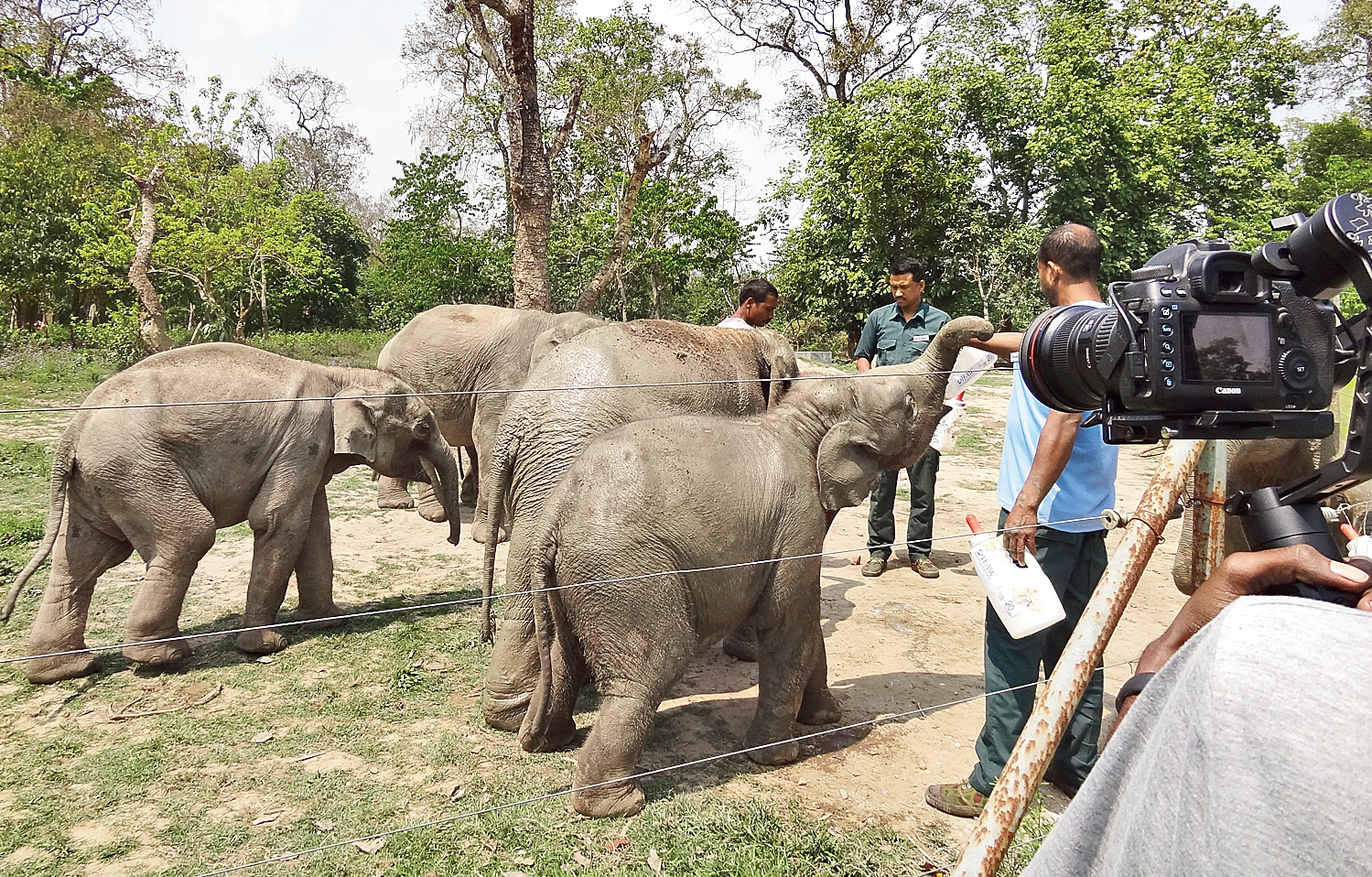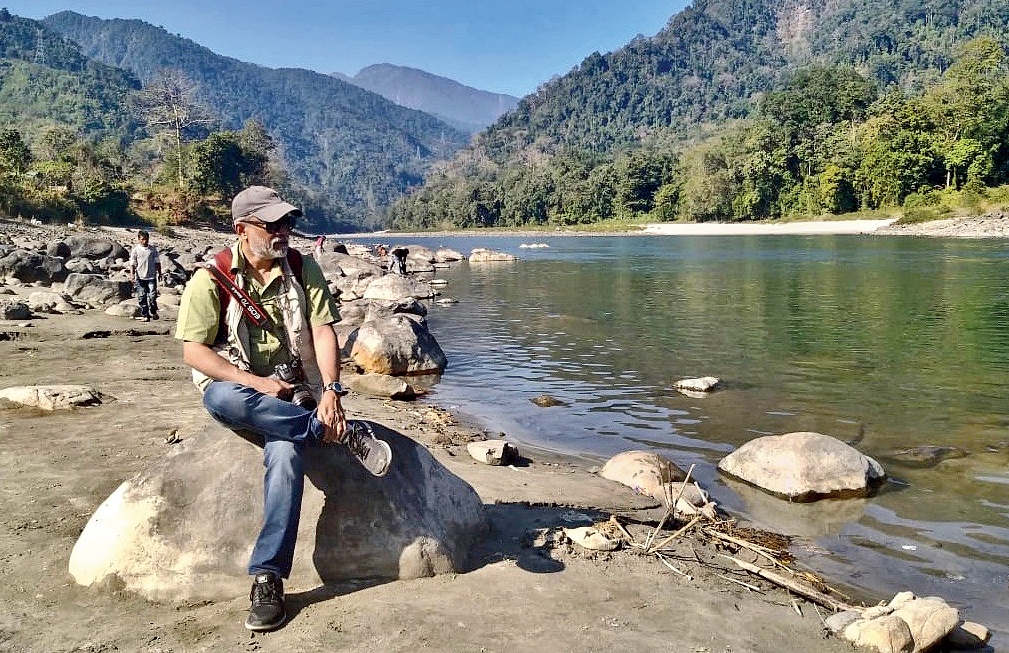Krishnendu Bose, a “probashi Bangali” from Delhi, has doffed the filmmaker’s hat to forest guards who protect our animal and marine life in a series currently airing on Animal Planet, called Heroes of the Wild Frontiers (Monday, 9pm). Shot in some of India's most beautiful national parks and reserves, the series takes viewers on a fascinating journey through wild India. A t2 chat with the National Award-winning founder of Earthcare Films.
Your show Heroes of the Wild Frontiers is on forest guards, right?
Yes. Whenever you go to the forest reserves there are two things you see — wildlife and guards. I have met some pretty amazing guards. They are experts in bird-watching and can rattle off as many names in the vernacular as an expert urban birdwatcher has at the tip of his tongue in English. For a long time, I wanted to make a film on them. I shot in six reserves. Each episode focuses on one reserve.
It is intriguing to find the Andamans on your list. Why did you go there?
Forests somehow mean tigers and tigers mean Bandhavgarh, Kanha and the Sunderbans. Even I did not know what to find when I went for a recce. Every episode has a hero forest guard. We had to choose one for the sake of the narrative. The guard at the Andamans, Md. Hussain, was a mechanical engineer who quit his job to join the forest department. The first time I saw him was under water, making notes on a waterproof page. That is how I start the episode on him. Andamans is a fun place for us. But these guys work so hard to manage the corals underneath. Corals are one of the most vulnerable and fragile eco systems but one of the most productive eco systems too. All the coastal fish live off it. They monitor the fish and the corals, and also guard against poaching as 85 per cent of the Andamans is tropical forest. There can also be crocodile problems as crocodiles get attracted by the food left on the beaches by the tourists. Then they have to be trapped and released far from habitation.
What was the biggest takeaway from the Andamans episode?
We were lucky to get footage of marine turtles hatching on our infra-red camera at night, including of a leatherback turtle. Leatherbacks are the largest of the species and can be as big as 6-7 ft in length.
Which are the other reserves that you shot in?
We also went to Kaziranga, the Sunderbans, Hemis in Ladakh and Pakke in Arunachal Pradesh. We also went to a part in north Bengal near Chalsa known for massive conflicts. Elephants stray from the Gorumara sanctuary in October-November, raid the paddy fields, destroy crops and sometimes kill people. Elephants have also been killed here by mobs. The forest department has three or four flying squads there whose job is to push back the tuskers into the forest. They are the wall between the elephants and people. They have to do this every night from September to December. We accompanied them as they went on these raids. It’s pitch dark and an elephant might knock you over from behind. There were amazing scenes — a hundred people with burning torches chasing an elephant. We had thermal cameras which pick up heat patterns of the body in the dark from as far as 60-70ft away.

A crocodile being trapped in the episode on the Andamans (Picture sourced by correspondent)

Baby elephants being fed by keepers at Kaziranga National Park (Picture sourced by correspondent)
Were you worried about the flood in Kaziranga?
To the layperson, Kaziranga flood is very damaging, which it is. You see the animals being killed. But you should remember that it’s a grassland ecosystem. Every time the Brahmaputra swells and inundates the park, the grass receives nutrients. The grassland needs it to sustain itself. It’s a natural ecological system. But every other year, there is massive amount of water and the deaths are higher.
Your film The Tiger Who Crossed the Line has premiered earlier on Discovery. What was that on?
It is about what happens to tigers which stray outside the jungle — a pretty unusual subject. It got the National Award.
You also run a trust for children. What kind of work does it do?
We have two wings — Earthcare Productions, through which we made this film, and Earthcare Outreach Trust, a non-profit. We work with young adults in villages. We teach them film-making and let them make films on issues close to their hearts.
Finally, is it a good time or a bad time for conservation in India?
Our wildlife has done well. Our forests are still intact. There have been development issues on the periphery but there is a lot of consciousness. Laws are very powerful now. I remember in 1995 when I was making a film in Bhuj, a cement company in Gujarat wanted a part of the (Narayan Sarovar) sanctuary denotified. They quietly went about it and got the bill passed in the Assembly. But the media got to know and the activists raised a massive hue and cry. I made a film. The matter reached court and the cement plant never got built. But now it is no longer possible to do such things secretly.
The tiger population has increased in the last 10 years. We have seven per cent of the world’s biodiversity despite having 1.2 billion people. People’s tolerance towards wildlife is very high in India. In America, if they see a puma within three miles of their backyard they shoot. Stray cases of lynching do get highlighted in the media but they are small in number compared to the frequency of man-animal conflicts.
